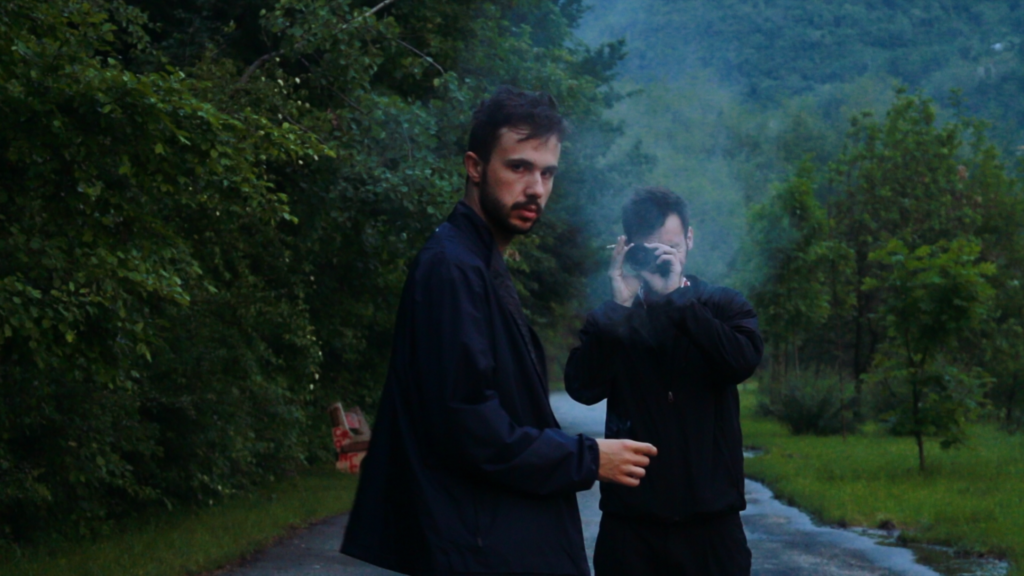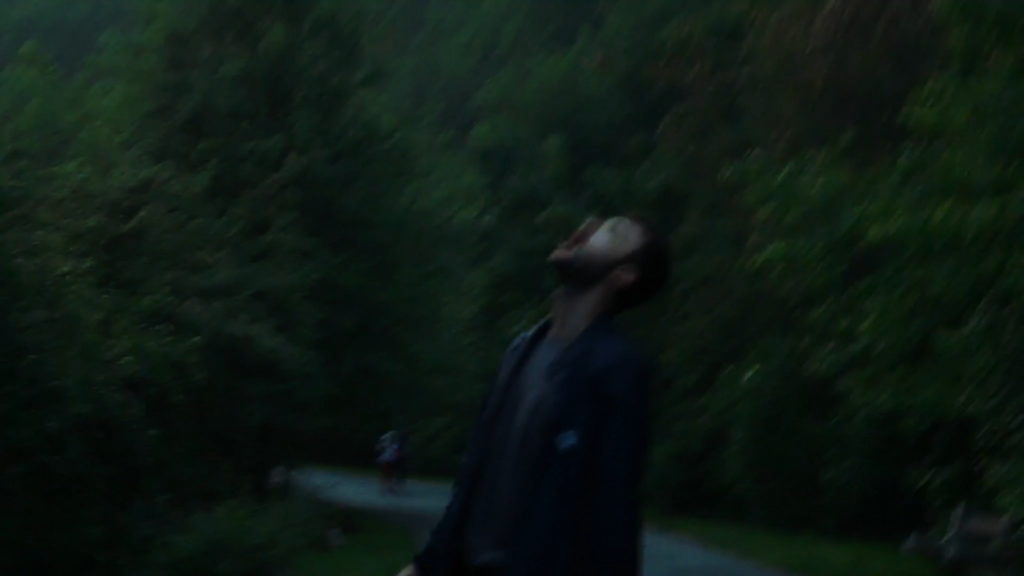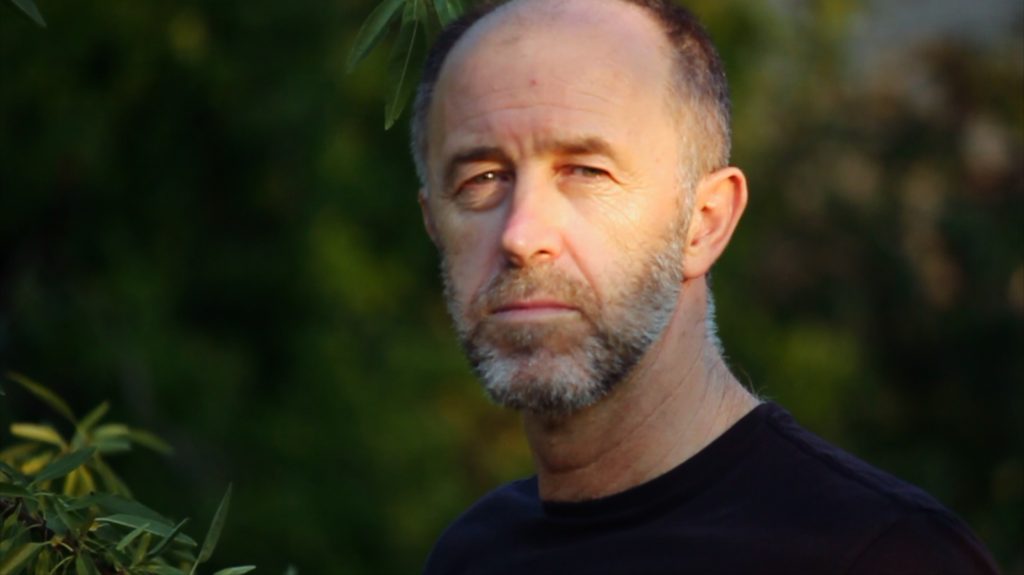Cool Moves: Minotaur (2020)

Between 2005 and 2019, Zulfikar Filandra filmed images, some with sound and some without. This is about the only thing I can say with any real certainty about Minotaur – and even that, only because the film tells me so in its final credits.
Minotaur is a film which evacuates your possible knowledge of it. There are moments, places … but where, when, under what circumstance? It’s best not to read anything about this work before watching it. Best not to be projecting outsider-ideas about Bosnia, or about the maker’s biographical itinerary, or about the production’s connection with the experimental film community of Ireland – although, doubtless, there are traces of all this evident somewhere in its cascade of shots and sound-samples.
Is it a film-diary in the manner of Jonas Mekas? Everyday ephemeral moments, caught on the fly, moods, faces, gestures, landscapes, city streets, weather. Often beautifully filmed, captured. Minotaur can be taken (and experienced) that way, but it’s more ambiguous.
The ambiguity comes from the range of types of footage drawn upon. Shot on various different technical formats (the screen size is constantly ping-ponging from one aspect ratio to another), there would seem to be many occasions and reasons why these images exist: as chronicle, as tests, as scenes from fictions, as vacation fun-and-games. Things stolen, and things staged. But where to place, how to determine the difference? It’s impossible. No line can be drawn, no categorisation can be meaningfully wielded.
We pose, we turn, we make a face, we compose a Selfie (Filandra films himself in many shots). We are just standing in the middle of a road when a friend snaps a picture of us. It’s all projection of one kind or another, strenuous or casual. Always a skein of real and imaginary, documentary and fiction. We form an image, and fall into fiction, whether we like it or not. And we are also brute, brutal evidence, whether we like it or not: our appearance at that split second, what we were feeling as betrayed by our face muscles and our posture, the clothes we were wearing, the shadow cast on us by the sun.
This lack of distinction between the types of material sometimes produces a startling effect. What are those guns and cops and ominous trucks we suddenly see? What’s this talk of imprisonment and escape? Eager to read some national and social allegory into what passes before our eyes and into our ears, we may have simply fallen into the ruined, cast-off fragment of some exuberant movie-genre exercise. Who knows? Grand fantasies need no historic trauma as an alibi to come into existence in our minds, and in our works. They flow and die like the wind, like emotions.
In the trailer that raised some money online to complete Minotaur, Filandra quickly listed his inspirations and influences. Mekas is there, for sure. But also the severe aesthetic eye and approach of Jean-Claude Rousseau; the emotion-drenched minimalism of Chantal Akerman; the iconoclasm of Jean-Luc Godard; and the phantasmagoric visions of Rouzbeh Rashidi (who collaborated closely on the film in terms of production, editing, sound, and now exhibition/distribution through his Experimental Film Society in Ireland). That covers a lot of possible options between the off-hand and the stylised, between nature and artifice.

© Zulfikar Filandra 
© Zulfikar Filandra
It’s not a story, and nor is it the kind of over-treated, hyper-stylised audiovisual notebook that Khalik Allah has offered us in his recent films. It’s not a wash of slow-mo and pumped-up poesis. The documents, the traces come to us, often, in a fairly raw state. It’s the selection of the cut, in and out, before and after, that matters.
Even if taken as a pure diary, it’s mysterious. There is no chronology of footage, no naming of “characters”, no clear tracing of relationships. Those we see are … friends, lovers, enemies, collaborators, strangers, who knows? There are glimpses of intimate moments (before, after, under the bedsheets), a wedding here, a child there, but no cohesive narrative of what-with-who, the coming and going of any one person with any other …
In mythology, the Minotaur roams the labyrinth, awaiting its human feast to be delivered. Filandra-as-Minotaur hacks his own archive, arranges it in a beguiling poetic order. Montage makes the form of Minotaur, shapes it and spaces it.
One thread through the labyrinth is human gesture: from the “cool moves” made as a dancing teenager in the opening home-movie footage, to the many arabesques of hands and arms whether produced consciously, semi-consciously or unconsciously …
What Bob Dylan said, cryptically, about Daniel Lanois’ production of the album Oh Mercy (1989) kept returning to my head as I watched Minotaur: it’s “deserted, like the intervals of a city have disappeared”. In filmic terms, this disappearance of intervals corresponds, in my mind, to the collapsing of every distinction between casual footage and mise en scène, between reportage and scenario. We have to take things directly, just as they hit us, as how they make us wonder or dream. We have to swiftly learn to stop worrying about naming or knowing or placing things.
The sound works in the same way, on a parallel but not wholly synchronised track with the images. Snatches of music, atmosphere, soundscapes: directly recorded or reconstituted, one rarely knows. Musical associations that sound like they come from the 1980s or even earlier, the first synth scores of Francis Lai in the ‘70s. Bits off TV, radio, records. But patches of silence, too. Breathing spaces.
In that sense, Minotaur is a city with intervals. With gaps, pauses, markers. The rhythm never gets tiresome or repetitive over its 64 minutes. It’s a river, we ride with it. Your emotions are elicited, and you don’t entirely know why. It’s a mystery of cinema. Filandra thinks of it as a film about youth, the experience of youth in time, but that youth is embedded in all of us, no matter how old we are.
Dylan also said of Oh Mercy: “The lyrics try to tell you about someone whose body doesn’t belong to him”. Even the most personal, direct, confessional cinema takes the maker out of themselves. Projects them elsewhere. Zulfikar Filandra has opened the passageways for his own dispersal; he stirs up the ghosts (living or dead, doesn’t matter) of his past and sends them on their way, without a name-tag, without a passport. They stream past us, out of the screen, and we catch hold of some of them, take them into our own labyrinth. It’s a séance well worth attending.
© Adrian Martin, 14 March 2021
















